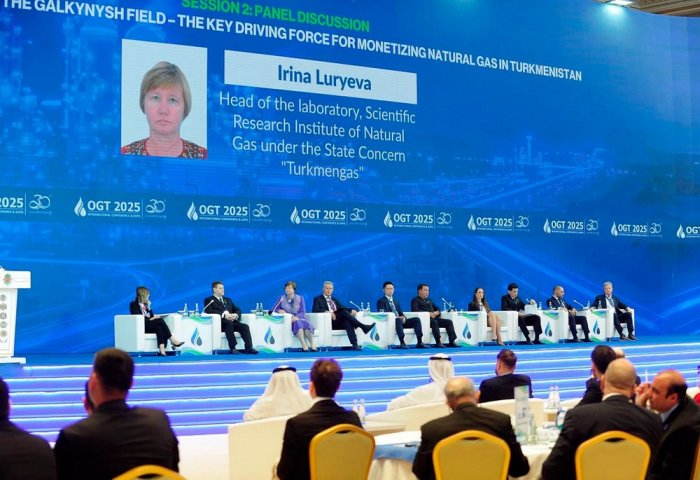Galkynysh Field Annual Gas Output Could Hit 200 BCM
At the international conference “Oil and Gas of Turkmenistan – 2025” in Ashgabat, Irina Luryeva presented a presentation on the current status and prospects for the development of the “Galkynyş” field. Dr. Luryeva, head of the laboratory for the development of this field and international gas pipelines at the Natural Gas Research Institute of the State Concern “Türkmengaz,” answered two key questions in detail.
Specifically, speaking about the development strategy and current status of the “Galkynyş” field, Luryeva provided the following information:
“The development of the "Galkynyş" field is being carried out according to a phased development strategy, which includes seven development stages. Pilot production is currently underway as part of the first stage. There are 52 active production wells, with another seven wells being prepared for connection. Additionally, eight wells are actively drilling.”
Doctor of Engineering Sciences I. Luryeva emphasized that the average design flow rate of the wells is 1.5 million m³/day and the reservoir's potential allows for maintaining a flow rate of up to 3 million m³/day over an extended period. Three wells, capable of stable production at a maximum flow rate of 3 million m³/day, were commissioned in 2022. According to forecasts developed jointly with Gaffney Cline experts, the period of continuous gas extraction for each stage will be over 30 years.
Regarding the prospects for further development of the “Galkynyş” field, I. Luryeva replied:
“The second, third and fourth stages of development are planned for the near future. Gas production rates will gradually increase and the phased development strategy allows for optimal investment allocation, taking into account the operating experience of existing wells.”
It was also noted that as new geological and field data accumulates, the geological and hydrodynamic model will be updated, allowing for the assessment of production efficiency and the adjustment of development options.
Upon full development of all stages, the field's gross annual gas production could reach almost 200 billion cubic meters.
Irina Luryeva also noted that, in addition to drilling and the construction of gas treatment plants, significant attention is being paid to technological and environmental issues, including the utilization of acid gases and CO₂. Options for injecting carbon dioxide into the field's aquifers and into depleted deposits at neighboring fields are being considered, allowing for the formation of man-made deposits and reducing environmental impacts.


